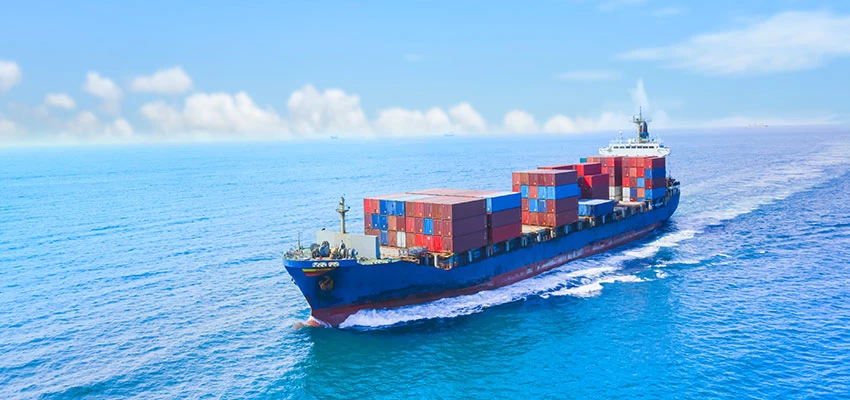Introduction:
Anti-dumping measures are implemented by countries to protect their domestic industries from the negative effects of unfair trade practices, such as dumping. Dumping occurs when foreign manufacturers/exporters export a product to another country at a price lower than its normal value, often below the cost of production or selling prices in the exporting country.
Generally, imposition of anti-dumping duty on a product result in increase in prices of that product in the country. This is because the imposition makes the product costly for importers giving the domestic producers room to increase their domestic selling prices to fair levels in the market. However, this may not always be true. There could be situations where the foreign exporters try and absorb the impact of anti-dumping duty in their cost or profit margins, either fully or to some extent, thereby preventing the expected price increases in the importing country. This situation is typically referred to as ‘absorption of duties’ by foreign exporters which nullifies the fair playing field which the anti-dumping duties intend to create in the market. Importing countries generally counter this practice by imposing ‘anti-absorption measures’.
This article will briefly discuss the first anti-absorption investigation conducted by India on Polyethylene Terephthalate (‘PET’) imported from China PR. [1] The article briefly touches upon the concept of anti-absorption with a lucid example for understanding of the reader. Next, the article discusses few issues which arose in the anti-absorption investigation by India on PET. Finally, the article closes by summarizing the implications of enforcing anti-absorption measures by India generally and, in particular, on PET.
Understanding the concept of anti-absorption:
Anti-absorption rules are designed to prevent foreign exporters and importers from negating the effects of anti-dumping duties. When an anti-dumping duty is imposed, exporters may try to maintain their competitive edge through lowering of their export prices by absorbing the cost of the duties in their price. This undermines the purpose of imposing anti-dumping duties, which is to level the playing field for domestic manufacturers in the importing country. Anti-absorption investigations are initiated to examine whether exporters are neutralizing the effects of the anti-dumping duties. The absorption of anti-dumping duty is explained in below example-
| SN |
Description |
Amount (USD/MT) |
| 1 |
CIF import price of Product ‘XYZ’ from an Exporter ‘A’ prior to imposition of anti-dumping duties |
1,000 |
| 2 |
Anti-dumping duty awarded to Exporter A |
100 |
| 3 |
Expected CIF import price of Product XYZ from Exporter A with antidumping duty (1+2) |
1,000 |
| 4 |
Actual CIF import price of Product XYZ from Exporter A after imposing the anti-dumping duties, which can be broken into two components below: |
1,050 |
| 4a |
- CIF import price prior to levy of duty |
950 |
| 4b |
- Amount of anti-dumping duty |
100 |
| 5 |
Anti-dumping duty absorbed by Exporter A (3-4) |
50 |
In the above example, Exporter A has reduced the prices of Product XYZ from USD 1,000 per MT to USD 950 per MT. There may be two reasons for Exporter A to reduce the prices of product XYZ, (1) The decline in prices due to decline in the cost of production, or (2) The decline in prices to remain competitive in Indian market without commensurate decline in the cost of production. The second scenario typically leads to anti-absorption measures.
In the above example, it is assumed that there is no decline in the cost of production of the Product XYZ and Exporter A has attempted to reduce the prices to India only to be competitive in Indian market by absorbing the cost of antidumping duty. This results in the import price (with anti-dumping duty) of USD 1,050 per MT as against the expected fair market price of USD 1,100 per MT. Because the Exporter A has reduced its export price by USD 50 per MT after imposition of duties with no explainable cause like reduction in cost, it may be concluded that the Exporter A has absorbed 50% of the anti-dumping duty imposed by India to remain competitive in the Indian market.
Needless to say, this results in continuing of economic injury to the domestic producers in India because the prices in Indian market are not allowed to return to their fair levels.
Anti-absorption measures on PET by India
PET is a widely used polymer in packaging, especially for plastic bottles. It is a critical material in the packaging industry and has been subject to anti-dumping duties in multiple jurisdictions, including the European Union, the United States, and India. The surge in imports of PET at unfairly low prices has been a cause of concern for domestic manufacturers in these regions, leading to anti-dumping measures designed to protect the local industries.
The Government of India had imposed anti-dumping duties on PET imports from China PR [2] pursuant to an investigation by the Directorate General of Trade Remedies, Ministry of Commerce and Industry (‘DGTR’) [3] to protect its domestic PET manufacturing industry from the adverse effects of dumped imports.
Post imposition of above anti-dumping duties, some exporters from China sought ways to mitigate the impact of duties through absorption thereby neutralizing the protective effects of the anti-dumping duties.
Pursuant to an application filed by domestic producers of PET, the DGTR conducted its first anti-absorption investigation and issued its final finding [4] recommending enhancement of duties on PET to the ministry of finance. This investigation marks a significant development in India’s efforts to curb unfair trade practices.
The application for anti-absorption investigation was filed by IVL Dhunseri Petrochem Industries Pvt. Ltd. and Reliance Industries Ltd. (‘applicants’) under Rule 30 of Customs Tariff (Identification, Assessment and Collection of Antidumping Duty on Dumped Articles and for Determination of Injury) Rules, 1995 (‘Anti-dumping Rules’) before the DGTR. The application was filed against an exporter from China, named Wankai New Materials Co. Ltd. or Zhejiang Wankai New Materials Co. Ltd. (‘Wankai’). The applicants alleged that the export price from Wankai has decreased post imposition of anti-dumping duty, without there being a commensurate change in the cost of production.
Key findings and issues dealt by the DGTR in the PET case
The investigation involved a detailed analysis of the pricing behavior of Wankai post the imposition of original duties in March 2021. The final findings of this investigation reveal the following key aspects:
- Anti-absorption application is permissible after 2 years from the imposition of anti-dumping duty:
Rule 29(3) of the Anti-Dumping Rules provides that an application seeking initiation of anti-absorption investigation normally within two years from the date of imposition of definitive anti-dumping duty. The proviso further states that such an application can be accepted after such expiry of 2 years in special circumstances in a given case, for reasons to be recorded in writing. In the present case, the application was filed by the applicants after expiry of 2 years from the imposition of anti-dumping duty which was opposed by parties under Rule 29(3). The DGTR noted that the applicants gave a justification for filing the application after two years and their justification was accepted by the DGTR. It was observed that Wankai group had undertaken recent capacity additions and its exports to India increased in recent year by around 315%. This was held to be a proper justification under proviso to Rule 29(3).
- Absorption of duties detected:
The DGTR found evidence that Wankai had engaged in practices that effectively absorbed the anti-dumping duties. To ascertain the absorption, the DGTR compared the raw material prices prevailing in the original period of investigation (‘POI’) and the POI of anti-absorption investigation. The DGTR concluded that although the raw material prices had declined leading to decline in the cost of production of PET but the decline in the export prices of Wankai was much higher than decline in cost.
- Quantification of absorption in USD:
The DGTR determined that the absorption should be quantified in USD and using INR was not appropriate as exports were made by Wankai in USD and Wankai had realized payments from customers in USD.
- Anti-absorption investigation need not be against the subject country as a whole:
An argument was raised that investigation must proceed against China as a whole and not just Wankai. The DGTR concluded that the law does not require that an investigation for absorption of duties must necessarily proceed against the whole country as against an alleged individual exporter who is shown to have engaged in absorption. It was determined that an anti-absorption investigation can be initiated either against one or limited number of exporters or the whole exporting country. The DGTR noted that there was no reason for initiating investigation against entire China.
- Adjustments made in the dumping and injury margins:
For the assessment of new antidumping rate to Wankai, the DGTR made the adjustments in normal value and the non-injurious price determined in the original investigation. The DGTR made the necessary adjustments in the raw material cost to re-quantify the duty amount for Wankai. Accordingly, the dumping and injury margins for Wankai were recomputed considering the current export price of Wankai to India vis-à-vis the reassessed normal value and non-injurious price after taking into account the changes in costs of raw materials.
- Recommendations for enhanced duties:
Based on the above findings, the DGTR has recommended an increase in the anti-dumping duties on PET imports from Wankai because the exporter was found to be absorbing the duties. This ensures that the protective measure regains its intended effectiveness by offsetting the unfair pricing strategies of Wankai.
Implications of the Final Finding:
The DGTR’s final finding in this anti-absorption investigation will likely have significant implications generally in anti-dumping investigations by India and, in particular, for the Indian PET market:
- Strengthened Anti-Dumping Enforcement:
The final finding demonstrates the Indian government’s commitment to safeguarding its domestic industries from unfair trade practices. By increasing the duties and reinforcing the measures, the government has ensured that foreign exporters cannot simply negate the effects of anti-dumping duties by absorbing them in their export prices.
- Impact on PET import prices:
While the import prices of PET may see an increase in the domestic market for downstream industries, including the packaging and beverage industries, this increase is likely to level the playing field for domestic and foreign players.
- Long-term benefits for Domestic Producers:
For Indian PET manufacturers, the increased duties offer some respite from the competitive pressure posed by unfairly priced imports. With better price control in the domestic market, local producers may experience improved profitability, market share, and better utilization of production capacities.
Conclusion:
The DGTR’s first anti-absorption investigation in the PET case is a pivotal step in addressing the persistent challenge of anti-dumping duty absorption by foreign exporters. This decision is expected to restore the protective benefits of the original anti-dumping duties imposed on PET imports, ensuring a level playing field for Indian producers. Going forward, the enhanced duties and stricter enforcement will likely contribute to a more balanced and fair-trade environment for India’s PET industry, fostering growth and stability for domestic manufacturers.
[The author is an Associate Partner in the International Trade & WTO practice at Lakshmikumaran & Sridharan Attorneys]
- [1] Case No. – AD (AA) – 03/2023 initiated on 4 March 2024
- [2] Notification No. 18/2021-Customs (ADD) dated 27 March 2021
- [3] Case No. (O.I.) 17/2019 (DGTR’s Final Findings dated 28 December 2020)
- [4] DGTR’s Final Findings dated 28 August 2024 issued in File No. 7/27/2023-DGTR












